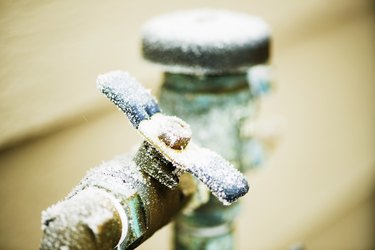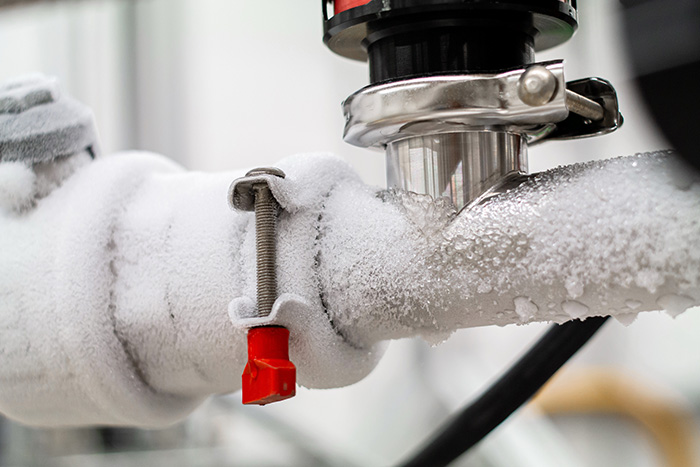Critical Approaches for Preventing Frozen Plumbing in Winter
Critical Approaches for Preventing Frozen Plumbing in Winter
Blog Article
We've unearthed this great article pertaining to How to Prevent Your Pipes From Freezing listed below on the net and figured it made sense to share it with you in this article.

Winter can wreak havoc on your pipes, particularly by freezing pipes. Here's exactly how to prevent it from happening and what to do if it does.
Introduction
As temperature levels drop, the risk of icy pipes increases, possibly resulting in pricey fixings and water damage. Recognizing just how to prevent icy pipelines is crucial for house owners in cold environments.
Prevention Tips
Shielding susceptible pipelines
Cover pipelines in insulation sleeves or use warm tape to safeguard them from freezing temperatures. Focus on pipes in unheated or exterior locations of the home.
Home heating methods
Maintain interior rooms sufficiently heated up, especially areas with plumbing. Open cupboard doors to allow warm air to distribute around pipes under sinks.
How to recognize frozen pipes
Look for reduced water flow from faucets, uncommon smells or sounds from pipelines, and visible frost on revealed pipes.
Long-Term Solutions
Structural changes
Consider rerouting pipes far from exterior walls or unheated locations. Include extra insulation to attics, basements, and crawl spaces.
Upgrading insulation
Purchase premium insulation for pipelines, attic rooms, and wall surfaces. Proper insulation aids keep constant temperature levels and reduces the risk of icy pipelines.
Shielding Exterior Pipes
Garden pipes and outdoor faucets
Separate and drain pipes yard pipes prior to winter season. Set up frost-proof spigots or cover outdoor taps with protected caps.
Understanding Icy Pipes
What creates pipes to ice up?
Pipes ice up when subjected to temperature levels below 32 ° F (0 ° C) for expanded periods. As water inside the pipelines freezes, it broadens, taxing the pipe wall surfaces and possibly triggering them to break.
Risks and problems
Icy pipes can cause supply of water disturbances, building damage, and costly fixings. Burst pipes can flood homes and trigger considerable structural damage.
Indications of Frozen Piping
Identifying frozen pipes early can avoid them from rupturing.
What to Do If Your Pipes Freeze
Immediate actions to take
If you presume frozen pipes, keep taps available to soothe stress as the ice thaws. Make use of a hairdryer or towels taken in warm water to thaw pipelines gradually.
Final thought
Preventing frozen pipes calls for proactive measures and quick responses. By recognizing the causes, indications, and preventive measures, property owners can secure their plumbing during winter.
5 Ways to Prevent Frozen Pipes
Drain Outdoor Faucets and Disconnect Hoses
First, close the shut-off valve that controls the flow of water in the pipe to your outdoor faucet. Then, head outside to disconnect and drain your hose and open the outdoor faucet to allow the water to completely drain out of the line. Turn off the faucet when done. Finally, head back to the shut-off valve and drain the remaining water inside the pipe into a bucket or container. Additionally, if you have a home irrigation system, you should consider hiring an expert to clear the system of water each year.
Insulate Pipes
One of the best and most cost-effective methods for preventing frozen water pipes is to wrap your pipes with insulation. This is especially important for areas in your home that aren’t exposed to heat, such as an attic. We suggest using foam sleeves, which can typically be found at your local hardware store.
Keep Heat Running at 65
Your pipes are located inside your walls, and the temperature there is much colder than the rest of the house. To prevent your pipes from freezing, The Insurance Information Institute suggests that you keep your home heated to at least 65 degrees, even when traveling. You may want to invest in smart devices that can keep an eye on the temperature in your home while you’re away.
Leave Water Dripping
Moving water — even a small trickle — can prevent ice from forming inside your pipes. When freezing temps are imminent, start a drip of water from all faucets that serve exposed pipes. Leaving a few faucets running will also help relieve pressure inside the pipes and help prevent a rupture if the water inside freezes.
Open Cupboard Doors
Warm your kitchen and bathroom pipes by opening cupboards and vanities. You should also leave your interior doors ajar to help warm air circulate evenly throughout your home.

I found that review about How to Prevent Your Pipes From Freezing while scouting around the internet. Sharing is good. Helping others is fun. Many thanks for taking the time to read it.
View More Report this page